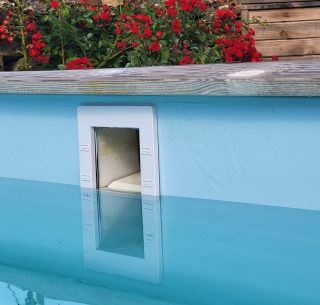The water level in a swimming pool is a fundamental aspect of maintaining a safe and healthy aquatic environment. Many pool owners wonder how high they should fill their pool and what the consequences can be if they do not follow the proper guidelines. In this publication, we will explore the importance of maintaining the proper water level in a pool and discuss the possible repercussions of not doing so.
The importance of water level
Maintaining the proper water level in a pool is essential for several reasons. Firstly, the water level directly affects the operation of the filtration system and water circulation. If the level is too low, the pool pump may suck in air instead of water, which can damage the pump and decrease its efficiency. On the other hand, if the water level is too high, an overflow may occur, which could flood nearby areas or even damage the pool liner.
In addition to the proper functioning of the filtration system, the right water level also contributes to maintaining the chemical balance of the pool. Pool water contains chemicals such as chlorine, which are essential to keep the water clean and bacteria free. If the water level is low, chemicals will become more concentrated than necessary, which can cause irritation to swimmers’ skin and eyes. On the other hand, if the water level is high, the chemicals will become too diluted and lose their effectiveness, which can result in poor water quality.

Consequences of not maintaining the proper level
Failure to maintain the proper water level in a pool can have a number of unintended consequences. Firstly, as mentioned above, a water level that is too low or too high can negatively affect the operation of the filtration system and water circulation, which can lead to cleaning and water quality problems.
In addition, an incorrect water level can cause damage to the pool structure. If the water is below the recommended level, the pressure of the surrounding soil can cause cracks or deformations in the pool walls. On the other hand, if the water exceeds the appropriate level, the excess weight can put additional pressure on the structure, which could cause long-term structural damage.
Last but not least, an inadequate water level can affect the safety of swimmers. If the water is below the recommended level, swimmers are more likely to trip or injure themselves when entering or exiting the pool. If the water is too high, the risk of overflow increases, which can result in slips and falls in the surrounding area.

In summary, the proper water level in a pool is essential to maintain optimal pool performance and ensure the safety of swimmers. Both too low and too high a water level can have negative consequences. Staying informed about filling guidelines and consulting pool maintenance experts are important steps to a safe and enjoyable aquatic experience.


Comments
Sus datos serán tratados por MANUFACTURAS GRE S.A. y por FLUIDRA S.A., con la finalidad de gestionar sus comentarios y dudas en el blog y, en su caso, ponernos en contacto con Usted para solucionarlas. Puede consultar más información sobre el tratamiento de sus datos y cómo ejercer sus derechos, tal y como se describe en la Política de Privacidad.